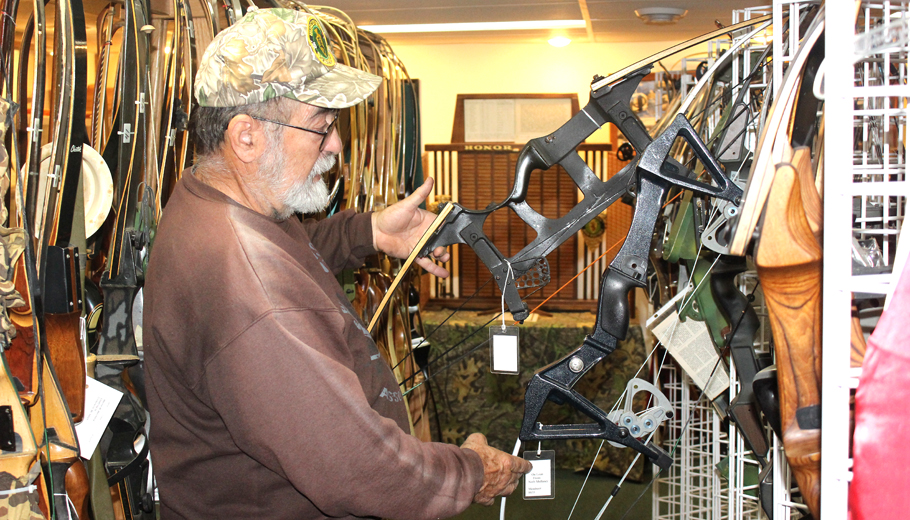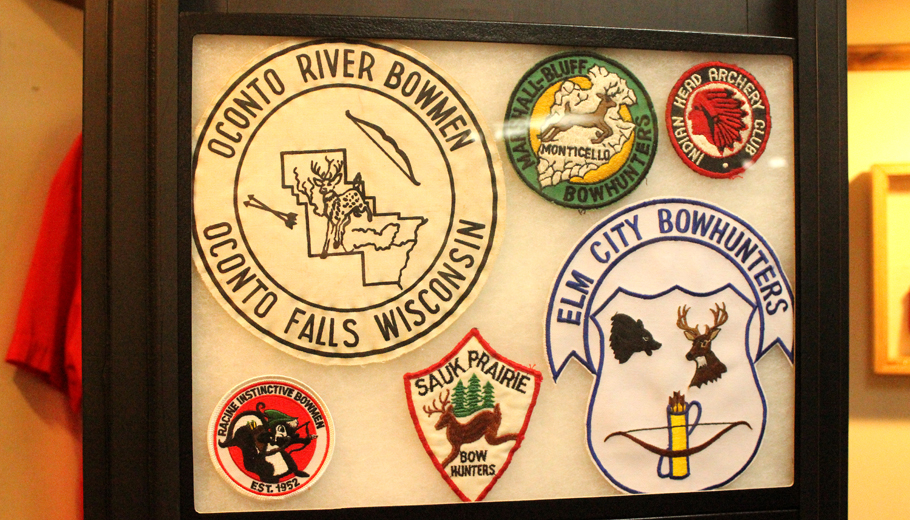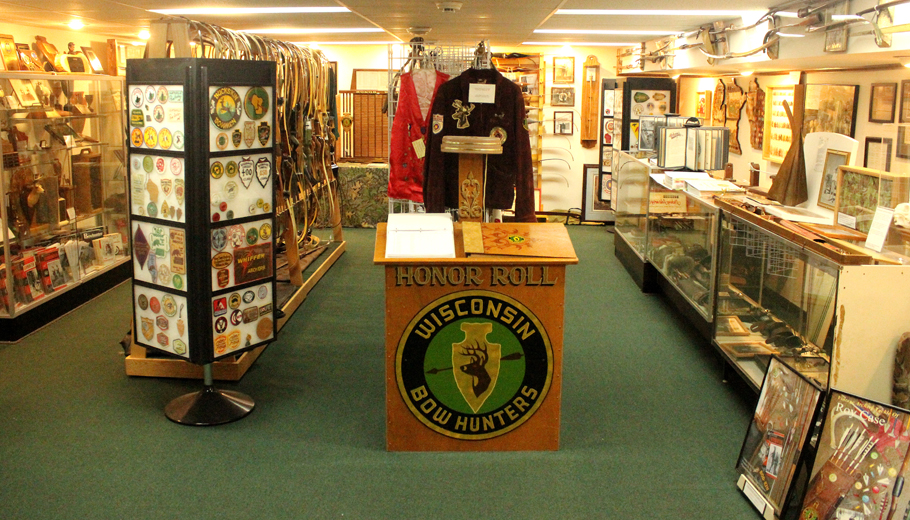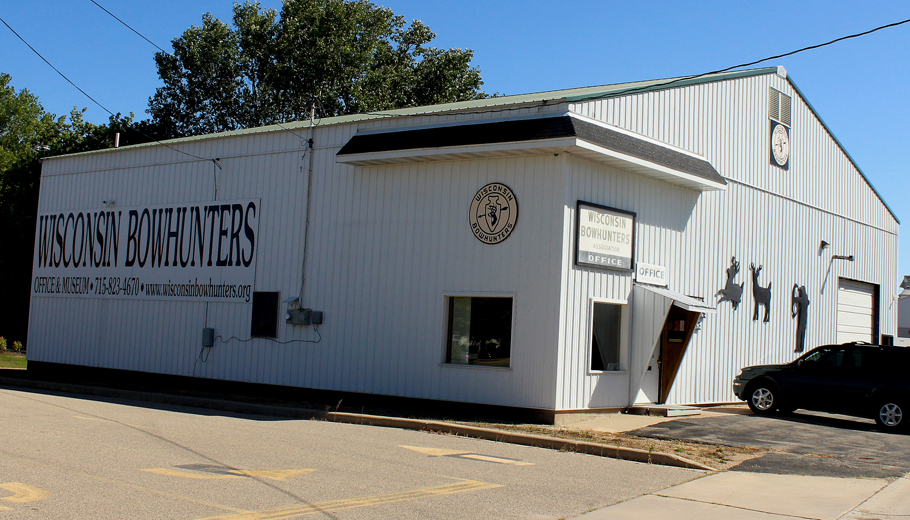History comes alive at Clintonville museum
By Greg Seubert
Roy Case is not a household name.
In the world of Wisconsin bowhunting, however, he’s a rock star.
Case is on record for shooting the state’s first deer with a bow in modern times. The Racine resident harvested the buck in northern Wisconsin’s Vilas County on Dec. 6, 1930, four years before Wisconsin held the nation’s first archery season for deer.
That deer, shot 90 years ago, is one of the main attractions at the Wisconsin Bowhunting Heritage Foundation’s bowhunting museum in Clintonville. The museum, housed in the headquarters of the Wisconsin Bowhunting Association at 17 E. Third St., has limited hours because of COVID-19, but the association’s treasurer, Don Rogalski, is more than happy to come down from his rural Clintonville home to give a tour.
“A lot of people have no clue how much Wisconsin had to do with getting bowhunting going,” he said. “What we really wanted the museum to do was to collect and preserve the stuff primarily made here in Wisconsin. A lot of this stuff is getting lost to rummage sales or grandpa passing away. A lot of it is getting thrown out. Some of it may have historic value. That’s why we’re here. We want to collect it, protect it, preserve it.”
WBH member Bill McCrary of DeForest had a hand in bringing Case’s exhibit to the museum.
“I put together a display of Roy Case bows and broadheads,” he said. “He manufactured broadheads and also had a pretty good collection.”
The exhibit also includes a head mount of Case’s 1930 deer, as well as the bow and arrow he used that day.
“Our history started when Roy shot that deer,” Rogalski said. “Before that, there was nothing.”
A little bit of everything
Case’s exhibit is currently on loan to the museum. Other items are permanent displays.
“We have two programs,” Rogalski said. “You can loan it or donate it. If you loan it, it’s your property. If you want to take it, just come in and fill out a form so we have a paper trail as to where it went and it’s yours. If you donate it, we have a collections committee that looks through it and determines if it’s of historic value. If it’s of historic value, we’ll put it on display. If it’s not of historic value, what we’ll do then is sell it and use the money to maintain the museum and for our scholarship program.”
“We do not purchase items,” McCrary said. “We don’t want to get a bunch of calls of ‘Do you want to buy my old bow?’ We’re going to say no. One thing about old archery tackle is people tend to keep it. It’s too good to throw away, but not good enough to use. They tend to put it up in the rafters in the basement and hang on to it. That’s the kind of stuff we’re looking for, the old items.”
The museum includes extensive collections of bows, arrows, broadheads, quivers and just about anything else to do with bowhunting.
“If it’s for bowhunting, we have at least one example of it,” McCrary said. “We’re looking primarily for items manufactured in Wisconsin because this is a Wisconsin bowhunting museum. We do showcase a lot of items. We have bows, arrows, broadheads, quivers, club patches, all kinds of stuff. We have a Wisconsin Bowhunting Hall of Fame and we have displays of the equipment of some of the Hall of Fame members.”
Several bow and broadhead manufacturers have called Wisconsin home over the years. Most of them have been out of business for years, but their products are alive and well at the museum.
Those bow manufacturers included Staghorn Archery Co. in Merrill and American Archery Co. in Oconto Falls.
“You don’t need a big, fancy factory with rail service to build bows,” Rogalski said. “It’s something you can do in a smaller town on a smaller scale. American Archery was a very big archery company from the Oconto Falls area. We have quite a few of their bows, but we don’t have them all. They didn’t even keep track of how many makes and models they built over the years.
“The archery companies were like the auto manufacturers back in the ‘40s and ‘50s,” he added. “There were all kinds of them and they started gobbling each other up. The smaller companies got bought out by the big guys. Their makes and models got melted together and they lost their individuality.”
A growing sport
Wisconsin Bowhunters Association helped make bowhunting a reality in the state, Rogalski said.
“They did the politicking in Madison to get bowhunting going and to get the favorable rules and regulations that we have today,” he said. “A lot of youngsters don’t realize that. They figure, ‘I bought a hunting license this year, bought one last year and maybe I’ll buy another one next year.’ They don’t realize how much work had gone in to get to where we are.”
Rogalski recalled bowhunting with his 14-year-old grandson.
“This little deer came out to him,” he said. “He finally got the shot off and he come over to me and was panting like he had just run a 100-yard dash. He was 14 and was so excited to actually get the shot off and get that deer.
“That’s the excitement or the thrill,” he said. “A lot of people don’t realize how hard it is to get a deer with a bow and arrow. You have to get that deer within 20 yards of you in order to stand up, draw back, hold steady and release all within seconds.”
McCrary and Rogalski said the museum’s purpose is to keep history alive.
“I think it’s pretty important for all of us to remember where we came from and the people that preceded us,” McCrary said. “Those archery guys in the 1930s and ‘40s helped guide what we have today. A number of the old-timers – Roy Case, Aldo Leopold, Larry Whiffen, Otto Wilke – set the stage for the modern bowhunting that we have today.
“True, it has evolved tremendously,” he said. “However, they set the stage and got us going down the right road. We have taken over for them. I think it’s very important to remember the guys who came before us. Without them, we would not have what we have today.”
Book traces bowhunting history
By Greg Seubert
As far as Bill McCrary was concerned, it was a story waiting to be told.
“It” is the history of bowhunting in Wisconsin and McCrary chronicled the sport in a book, “The History of Wisconsin Bowhunting 1930-2016.”
“I’m 75 years old,” McCrary said from his suburban Madison home in DeForest. “I have been shooting a bow and arrow since I was 3 or 4. I started deer hunting with a bow and arrow at age 12, so this is something I’ve been doing my entire life.”
McCrary is also active in the Wisconsin Bowhunters Association and Wisconsin Bowhunting Heritage Foundation, which are headquartered in Clintonville.
The Wisconsin Bowhunters Association – WBH for short – traces its history to 1941, seven years after Wisconsin established the nation’s first archery season.
Roy Case used a bow to harvest Wisconsin’s first deer in modern times in Vilas County in 1930.
“You cannot consider Wisconsin bowhunting history without first considering Roy Case,” McCrary said.
Case was the grandson of Jerome Case, who established J.I. Case Threshing Machine Co., a Racine-based manufacturer of agricultural and construction equipment that later became J.I. Case Co.
“He got interested in archery and bowhunting and it took off from there,” McCrary said. “Roy was certainly a well-known archer in Wisconsin back in those days. He made bows, he designed equipment, he made it, he sold it, he popularized bowhunting in the 1920s and 1930s.”
Case also helped the Wisconsin Bowhunters Association get off the ground, according to McCrary.
“In the very late fall of 1940, Roy wrote a letter to the Wisconsin Conservation Department and he asked for the names and addresses of everybody who had registered as bowhunters in Wisconsin for the 1940 season,” he said. “The Conservation Department sent him a list of 1,170 names and addresses. He then sent an invitation to each one of those bowhunters and said, ‘Come to the Loraine Hotel in Madison on March 30, 1941, at 3 in the afternoon. We want to have a meeting to talk about starting a statewide bowhunters group in Wisconsin.’
“Roy organized the first meeting, he financed it out of his own pocket and the 140 guys that showed up for the first meeting were the charter members,” he added. “The Wisconsin Bowhunters Association has been growing strong ever since then. The goal of the WBH has always been to promote, preserve and protect the interests of the bowhunter.”
Bowhunting seasons for deer, bear and turkey have grown in popularity in Wisconsin over the years, but that wasn’t always the case.
“Deer hunting in Wisconsin prior to the 1940s had been pretty much been owned by firearms hunters and a lot of people back then considered the bow and arrow to be a primitive weapon not capable of dispatching an animal humanely,” McCrary said. “They thought bows and arrows weren’t accurate enough, they weren’t powerful enough, they were not a suitable hunting weapon. All they did was go out and cause untold amount of pain, misery and suffering to animals in the woods.
“Deer hunting belonged to the rifleman and here are these guys coming in trying to shoot our deer and they’re using primitive weapons,” he said. “Bowhunting was getting a bad rap in the Wisconsin sporting world. In order for bowhunting to survive and weather the storm, Roy Case and a few others thought the way it should grow is by forming an association to speak up and defend it.”
McCrary interviewed archers and looked up past records of the WBH and Wisconsin Conservation Department, now the state Department of Natural Resources.
“I’ve gotten to know a lot of people in doing archery for so many years,” he said. “I was able to ask a lot of them, ‘What do you think, what happened back then, what was it like?’ I talked to people that I knew. I also asked them, ‘Who do you know that I can talk to?’ I got names and numbers.”
McCrary is also involved with the museum that the WBH houses in its headquarters in Clintonville.
“Being a director for the museum, I had access to the records of the Wisconsin Bowhunters Association and have contact with a lot of people in the group,” he said. “I was invited to the DNR and I was actually able to go through some of their old records from the 1920s and ‘30s. I was able to look at those. As far as I know, this was the first time anybody had ever gotten into the archives of the Wisconsin Bowhunters Association. I put them all together and I came up with the story of bowhunting in Wisconsin.”
McCrary’s book also traces the major changes to the sport.
“You can certainly talk about how the equipment has changed,” he said. “The modern compound bow is a technological wonder compared to the old straight bows that they had in the 1920s and 1930s. Back then, a lot of bowhunters made their own equipment. Today, very, very few bowhunters even attempt to make their own tackle. There is a group of bowhunters in Wisconsin who identify as traditionalist bowhunters. They still hunt with the old-style tackle, but there aren’t as many of them as they modern bowhunter.”
Today’s bowhunters use arrows made out of carbon and aluminum.
“They use a mechanical release and most guys use a sight,” McCrary said. “The old way of doing it was with a wooden long bow with a wooden arrow, a two-blade broadhead and a finger release, probably without using a sight on their bow. You get a modern-day bowhunter all decked out in the latest hunting clothing with the modern technical equipment and you get a bowhunter from 1930 with wool clothing, leather boots and a long bow, you’re looking at two different animals.”
Hunting methods have also changed.
“Back in the 1930s, a lot of bowhunters made a lot of drives,” McCrary said. “You don’t hear much of that today. It’s mostly hunting from a tree stand or a ground blind. When I started in the ‘50s, drives were still pretty popular, but not so much anymore.
“The goal that hunters go out with today is different than it was,” he said. “Most guys back then were meat hunters. They went out to shoot a deer to put food on the table. A lot of bowhunters today – not everybody, of course – I have to admit are trophy hunters. There’s a little different approach to the game if you’re a meat hunter or if you are a trophy hunter. I’m not saying that one is any more noble or honorable than the other. They both have their clientele, but it is a different type of hunter. I do feel the majority of bowhunters are out in the woods for the sporting aspects of bowhunting and for the challenge deer hunting presents. When you take a deer with a bow, you know you’ve done it the hard way.”
McCrary’s book can be purchased at the WBH headquarters in Clintonville or through the organization’s website, www.wisconsinbowhunters.org.
“I’m not a scientist or a historian,” he said. “What I had was the initiative to dig into the history, try and put 2 and 2 together and make it add up to the historical story of bowhunting.”




